
Click on the picture to download and start playing the Hawaii Five-0 theme in .WAV format. You must have a .WAV capable browser or helper application already installed and configured. 925K
The title sequence of
Hawaii ‘Five-0’
Flash back to the past
By Burl Burlingame
Star-Bulletin
The opening credits of "Hawaii Five-O" are among the most distinctive ever created for television, with the soaring wave and tumbling title, the parade-ground rumble of Morton Steven's theme music - where would marching bands be without that tune? - and then a pixilated montage of places and faces that establish the locale as certainly not a Burbank sound stage.
The credit sequence was directed by Reza Badiyi, who also directed the pilot film, as well as TV movies "Policewoman Centerfold" and "Blade in Hong Kong." Director of photography was Richard Rawlings.
The credits, which changed only slightly through the show's 12-year run to incorporate cast changes, provide a time capsule of that peculiar, polyester era in Hawaii history. We tried to track down some of the locales and people featured.
The wave
The location of the majestic wave that ushers in the show has been debated among local surfers ever since "Five-O" first aired - and will likely continue to be. Since it's a piece of stock footage, bought from a broker and not filmed by the "Five-O" crew, it could be anywhere. Bishop Museum film historian DeSoto Brown, however, has traced it back to the 1967 surf film "Blue Surf-Ari," the title of which tumbles out of the same wave exactly the same way the "Hawaii Five-O" did in its premiere a year later.
"'Blue Surf-Ari' was produced and directed by Milton Blair, and some of the footage dates back to 1964," said Brown. "Although some of the surf footage come from California and Australia, that particular wave is described as being at Banzai Pipeline."

Those hips, those eyes
This brief snippet featuring a Tahitian dancer was edited from a longer sequence in "The Cocoon," the pilot film. She entered the showroom - which appears to be Duke's - did a stomp-and-shake before the appreciative and largely male audience, and then the Aliis played Kui Lee's "Ain't No Big Thing," a tune that was reprised several times on the series. The scene is primarily an excuse for Jack Lord to flirt with Nancy Kwan, who earlier traded the immortal lines "Why did you become a cop?" "Why did you become a hippie?" before tongue-wrasslin'.
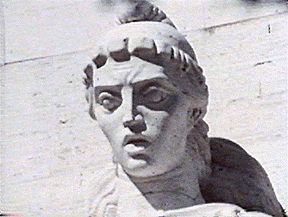
The face
The camera made a jerky zoom, cut on the beat, into the face of a female statue that was, well, statuesque. A trick of the reflected light makes her look startled and annoyed. Called "Lady Columbia," she is a symbol of motherhood on the far wall at the National Cemetery of the Pacific, otherwise known as Punchbowl, and she still broods today over the graves of the brave departed.
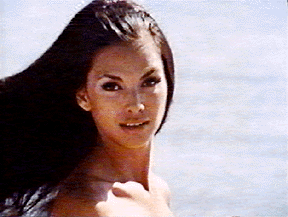
The girl
She ran down the beach, shook loose her hair and made grown-up men think seriously about a Hawaii vacation without the missus. This face, belonging to Elizabeth Louise Malamalamaokalani White Logue, was inescapable during the 1960s, as she was the poster girl for the Hawaii Visitors Bureau. That's not all - Logue was also the University of Hawaii's Miss Air Force ROTC in 1959, a star in the films "Hawaii" and "Odissea Nuda," a reservations agent at Hawaiian Air Lines and one-time wife of Tahiti artist George Logue. "Liz" Logue, however, pretty much dropped out of sight in the early 1970s, after a one-week marriage to a Las Vegas real estate magnate.
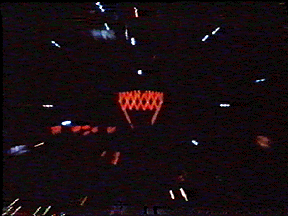
The red light
Another shaky zoom onto what seems to be a UFO, a diamond-shaped neon landmark. It's a decoration on the old Tops Restaurant in Waikiki - not Tiki Tops, that was a Windward eatery - that sort of marked the event horizon that was old Waikiki. It was torn down in 1976. Tops Restaurant was located on the corner of Ena Road and Ala Moana Boulevard.

The boy
We have no idea who this kid is. If you know, let us in on it. Charlotte Simmons of KHET, who used to work on "Five-O," couldn't recall.
"All I remember is that I think he was paid about 25 bucks," Simmons said
[ONLINE UPDATE: WE FOUND THE BOY!
Watch tomorrow's Honolulu Star-Bulletin for an update.]

Diamond Head
The landmark looks pretty much the same today, except for more hotels springing up like psoriasis. In 1968, however, the military controlled the interior of the crater and public-minded citizens were allowed in only once or twice a year in order to attend the "Sunshine Music Festival" and "Crater Festivals."
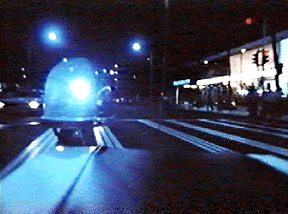
The blue light
Examine closely what appears to be a police light flashing atop a car careening madly through town. It turns out to be a smaller light attached to something rather smaller and lower, the edge of a motorcycle sidecar perhaps, or a golf-cart bumper. The speeded-up feel is created by "undercranking," getting fewer frame per second, which when played back at normal sprocket rates adds a lot of zip. The notion was copied from the gritty police drama "N.Y.P.D." (not the "Blue" version) that premiered the previous year. Notice also the light is traveling Ewa along Kalakaua Avenue, which, hey, goes one-way the other way today.

Aloha Tower
This image, which we're guessing was made about 4 o'clock in the afternoon, is part of some quick cuts taken during a flight along the shoreline of Honolulu Harbor to Waikiki. They include this rather industrial view of the Tower, Ala Wai Yacht Harbor, the later-demolished Kaiser Hospital, the Royal Hawaiian Hotel and, for some reason, a spectacular view of the Waikiki Shores hotel.

The Ilikai
Zoom, zoom, zoom to the penthouse, where McGarrett spins around and fixes a steely stinkeye on the camera. What's he doing up there? Watching out for zoom cameras attached to helicopters? What today's young whippersnappers don't know is how the three-lobed Ilikai Hotel completely dominated Waikiki in long-ago 1968. It seemed absolutely enormous. Since then, the hotel has gone partially condo, and the residents association can complain about zoomy helicopters.
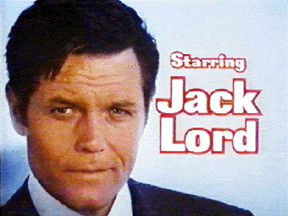
Five-0: Greater than the sum of its parts











